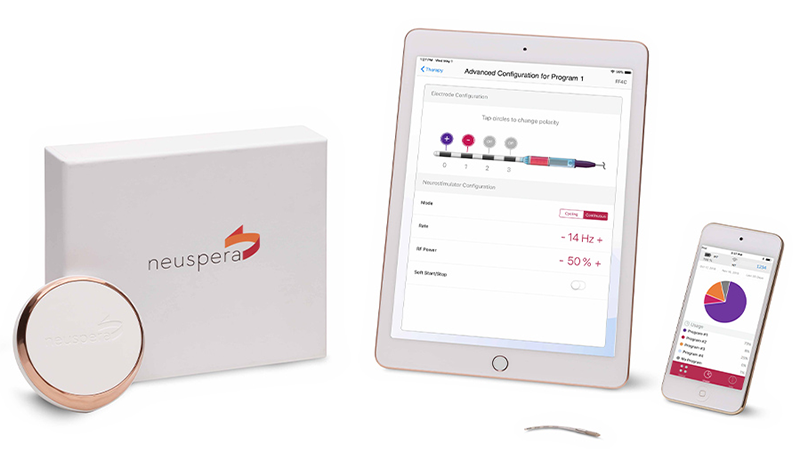Neuspera Medical, a privately held, clinical-stage medical device company, announced the completion of the first chronic clinical implants of the Neuspera Neuromodulation System on the sacral nerve. The ultra-miniaturized device has been implanted in the first set of patients treated in the Company’s recently launched SANS-UUI two-stage seamless pivotal clinical trial to support FDA approval for patients with Urge Urinary Incontinence (UUI), a symptom of overactive bladder.
The Neuspera Implantable Sacral Neuromodulation (SNM) System is comprised of a minimally-invasive implant and convenient external wearable designed to provide relief from the life-limiting symptoms of Urinary Urgency Incontinence. It’s the smallest known sacral nerve stimulator—more than 100 times smaller than currently available systems. The technology platform offers physicians the first catheter-delivered sacral Neuromodulation device with no need for tunneling or pocket formation for an implanted battery. Neuspera’s patented Mid-Field Powering technology allows the implant to be wirelessly powered by a lifestyle-integrated, wearable, external transmitter. Together, these features allow patients to benefit from a less invasive implant procedure with, potentially, fewer complications and post-surgical adverse effects, says a press release.
Rebecca McCrery, MD, FACOG, FACS, a Board-certified urogynecologist in Omaha, Nebraska who performed the first implantation, commented, “It is exciting to see continued innovation in the sacral nerve stimulation space resulting in more options for patients and physicians. I was impressed that the implant procedure was very straight forward and importantly, placement of the implant does not require pocket formation, blunt dissection, or tunneling – making this procedure less invasive for both patients and physicians.”
“Neuspera’s system may broaden the appeal of sacral Neuromodulation for urinary urge incontinence patients who are reluctant to try implantable therapy because of the invasiveness of the options currently available,” added Dr. Steven Siegel, Principal Investigator for the SANS-UUI trial and a world-renown urologist for his work in sacral Neuromodulation treatment for overactive bladder patients.

The SANS-UUI trial is a prospective, multi-center, single-arm, open-label, two-stage seamless pivotal trial evaluating approximately 200 patients globally. The first phase will be conducted at up to 14 sites in the U.S. and Europe to assess the utilization of the system and help inform the length of time of daily stimulation to be used in the second phase. The second phase of the trial will assess the safety and efficacy of the Neuspera Neuromodulation System at six months for the primary efficacy endpoint and at 12 months for secondary safety and efficacy endpoints.
“The start of the SANS-UUI trial brings us a step closer to our goal of delivering the benefits of sacral Neuromodulation to patients who have struggled with urinary urge incontinence and have yet to find an acceptable stimulation therapy option,” said Dr. Milton Morris, President & CEO of Neuspera Medical.
Read more DFree Wearable Device for Urinary Incontinence Launches in US
San Jose, CA-based Neuspera Medical is a clinical-stage neuromodulation company committed to developing implantable medical device technology to improve the lives of patients battling chronic illness or dysfunction. The Company is leveraging its fourth-generation patented Mid-Field Powering Technology, which allows for devices that are significantly smaller, that may be implanted deeper in the body, and maybe more reliable than other miniaturized neuromodulation technologies.












